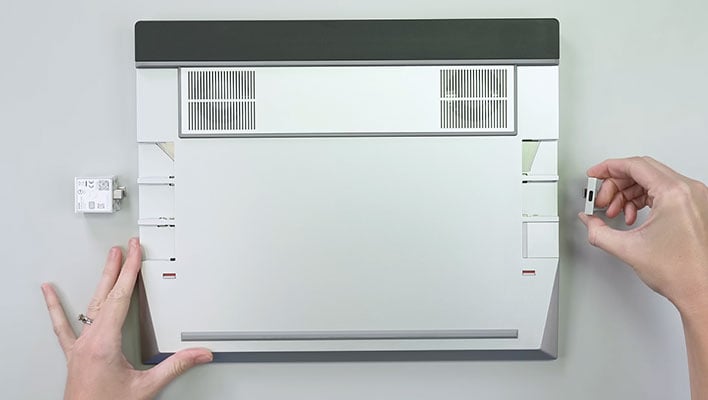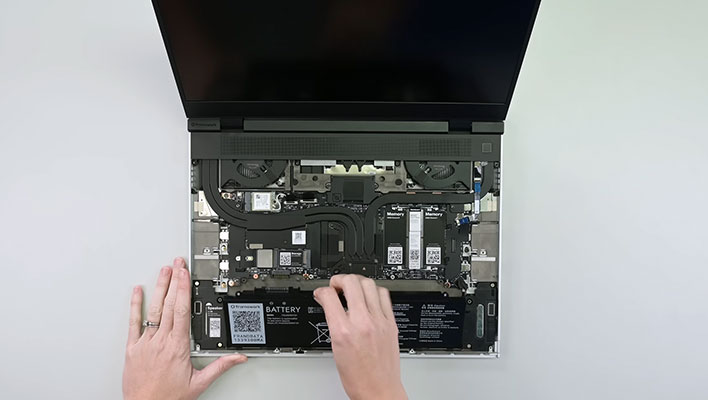Framework 16 Modular Laptop Aces Teardown Test With Flying Colors

Our collective desire for increasingly thinner, lighter, and more premium-designed laptops has, in many cases, come at the expense of do-it-yourself (DIY) repair and replacement options. Does it really have to be that way, though? Framework argues otherwise and its modular laptops are proof that we can indeed have our cake and eat it too. Further proof of this is the relatively-new Framework 16 earning a top grade in iFixIt's teardown evaluation.
Before we get to the nitty-gritty details, let's start with the specs. The Framework 16 comes with either an AMD Ryzen 7 7840HS or Ryzen 9 7940HS processor (Phoenix, Zen 4), both with integrated Radeon 780M graphics, which users can upgrade to a discrete Radeon RX 7700S GPU.It also features up to 64GB of DDR5-5600 memory, M.2 2280 and 2230 slots for SSD storage, Wi-Fi 6E and Bluetooth 5.2 wireless connectivity, six user-selectable I/O expansion bays that can be configured with things like USB-C and HDMI, and 85Wh battery, a 16-inch IPS display with a 2560x1600 resolution and 165Hz refresh rate, and a few other odds and ends.

It's a decent collection of parts, though what really makes it stand out is the combination of a modular design with the fact that virtually every part of the system is user-serviceable. The question is, how involved is the process when it comes to, say, replacing the battery or even the GPU. That's what iFixIt aimed to find out, and the answer is it's an easy process from start to finish.
The first impression was that the new exterior design for the 16-inch model is "even more seamless than before with entry to the device cleverly hiding under ultra modular top deck." In other words, it looks more like a standard laptop this time around, though from our vantage point, it still differs in aesthetic appeal versus systems like HP's Omen Transcend 16 and Dell's Inspiron 16 Plus.
Modules for the Framework 16 are the same as the Framework 13, which is great if you decide to upgrade. The expansion modules, or ports, easily slide into the sides of the Framework 16 and are hot-swappable to boot. So, if you want to have an HDMI port on both sides, you can certainly do that.
The teardown shows how easy it is to pop up portions of the top deck, which don't require any tools to remove. From there, it's a matter of removing a bunch of T5 screws to get deeper access into the laptop, each of which are numbered (1-17).
Once inside, iFixIt goes a little over the top with gushing about how easy it is to remove the M.2 2280 SSD and two memory modules. There's not really much inherently unique about the process versus other laptops that also let you swap out the same parts. The one minor exception is the use of gold-colored screws to represent removable fasteners.

That said, the Framework 16 goes several steps further than most laptops, starting with the battery. The teardown reveals that "the batter is about as swappable as it gets" with just three screws and no adhesive holding it down. What's also neat is that when you slide the battery into its connector, red LEDs will light up to let you know it's made a proper connection and is receiving power.
The rest of the teardown (embedded above) goes over various component removals, including the GPU and the entire mainboard. The only minor knock is that the USB-C ports that receive the modules are soldered to the motherboard, but iFixit points out that it's not much of a concern "given the strong connection and that replaceable modules will be receiving the wear."
When the dust settled, the Framework 16 walked away with a perfect 10/10 repairability score.

